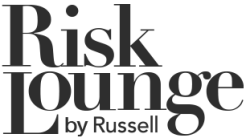
The impending implementation of Solvency II and the increasing expectations among rating agencies are driving insurers to continue to bolster their enterprise risk management (ERM) programmes, according to a recent survey commissioned by professional services company Towers Watson.
The results of Towers Watson’s sixth biennial Insurance Industry ERMsurvey found that Solvency II remains the primary focal point for European insurers, and implementation challenges are becoming more evident.
The firm said Solvency II brings with it an increasing focus on all aspects of risk management within companies.
“It makes a direct link between risk and capital requirements and this will have far reaching implications of the organisation including product design, pricing, hedging and reinsurance and capital optimisation,” said the report.
Naren Persad, senior consultant at Towers Watson, said: “This would help explain why a significant majority of respondents to our ERM survey indicated that they intend to develop internal models for at least some risks. The survey also notes that internal model preparedness is a concern, with only 10 percent of respondents believing that their internal models would currently pass the approval requirements.
“This is likely to be one the greatest challenges facing companies and some markets have already put in place formalised processes for supervisors to assess and are likely to approve the internal models for companies before the start of Solvency II.”
Another key finding in the survey is around the lack of available resources. According to the research over half of European insurers (53%) view people challenges as their greatest challenge in terms of implementing ERM.
Mr Persad added: “We have seen a significant demand for skilled resources in Europe as companies continue their preparation for Solvency II, however only 23 percent of respondents are focusing on skills/resource development as a priority. Solvency II requires skilled finance, actuarial and risk management resources and these are in short supply. This is a particular problem as companies, supervisors and company advisors will all be competing for scare resources at the same time.
“Companies should now be looking to utilise their own internal resources via training programmes and Solvency II project work to embed the knowledge within the organisation.”





